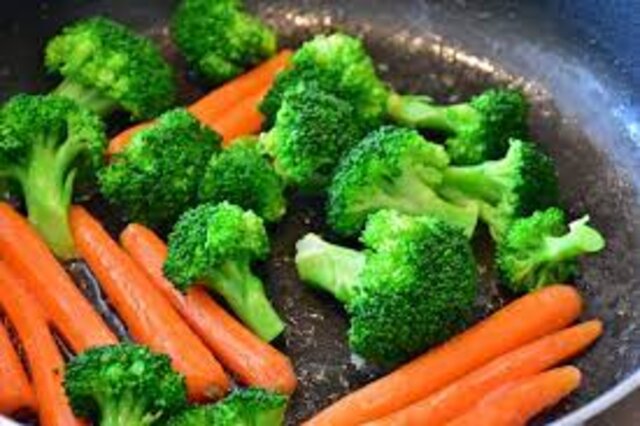Ever wondered how restaurants get their vegetables so crisp and colourful?
The answer is blanching, a quick cooking method that unlocks a world of culinary possibilities. Blanching takes minutes, but the benefits last a lifetime (or at least until you devour those delicious veggies)!
Imagine emerald green broccoli florets, bright orange carrots, and snap peas with a vibrant pop of colour.
Blanched vegetables retain their natural hues, boasting a glossy sheen and a crisp, inviting texture that’s ideal for salads, stir-fries, and countless other dishes.
How To Blanch Vegetables
Blanching vegetables is a great way to prepare them for freezing or cooking.
Follow these simple steps to learn how to blanch vegetables like a pro and enjoy them all year round!
Follow these simple steps to learn how to blanch vegetables like a pro and enjoy them all year round!
Equipment
- Large pot
- Colander
- Slotted spoon
- Large bowl
- Ice cubes
Ingredients
- 500 g vegetables such as broccoli florets, green beans, asparagus spears
- water
- 1 Tbsp. salt optional
Instructions
- Fill your large pot with water and bring it to a rolling boil.
- If using the 1 Tbsp. salt, add it now.
- While the water heats, prepare your 500 g vegetables by washing and Chop them into uniform pieces.
- Once boiling, carefully add the vegetables to the pot in batches to avoid lowering the water temperature.
- Start your timer and blanch according to the vegetable type. (see chart below for reference).
- As each batch finishes blanching, immediately remove the vegetables with a slotted spoon and plunge them into a prepared ice bath (large bowl filled with ice water).
- This stops the cooking process and preserves vibrant colour.
- Let the vegetables cool completely in the ice bath, then drain and pat dry.
- Your perfectly blanched vegetables are now ready to use!
Blanching Time Chart (approximate):
- Asparagus spears (thin): 1-2 minutes
- Broccoli florets: 2-3 minutes
- Green beans: 2-3 minutes
- Snap peas: 1-2 minutes
Note:
- Cooking times may vary depending on the thickness of your vegetables. Be sure to test for doneness by removing a piece and tasting it.
- You want the vegetables to be crisp-tender, not mushy.
Notes
Tips:
- Use a slotted spoon to easily transfer vegetables between the boiling water and ice bath.
- Blanch vegetables in small batches to ensure even cooking.
- Don't overcook your vegetables! The key is to achieve crisp-tender perfection.
- Blanched vegetables can be stored in an airtight container in the refrigerator for up to 5 days.
Blanched Vegetables Uses:
- Salad
- Stir-fries
- Sautéed side dishes
- Soups and stews
- Pasta dishes
- Frozen for later use (blanching is a must before freezing vegetables!)


Thank you. Very informative with perfect results